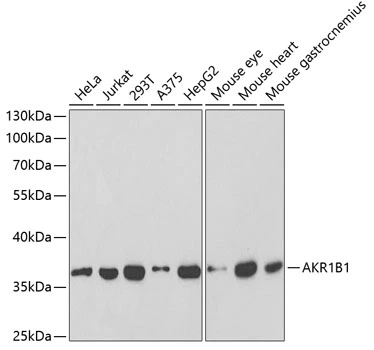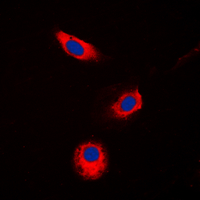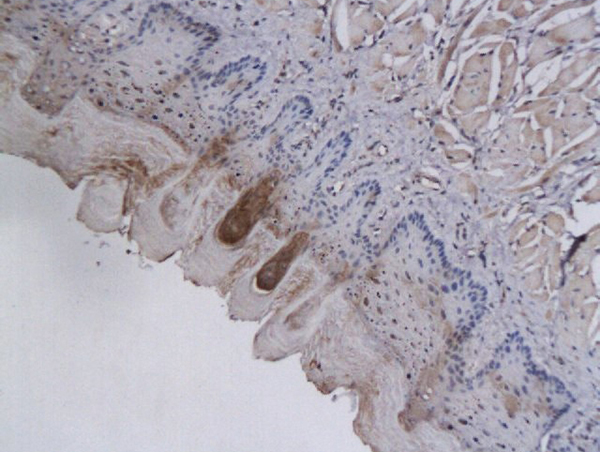
WB analysis of various sample lysates using GTX30040 AKR1B1 antibody. Dilution : 1:1000 Loading : 25microg per lane
AKR1B1 antibody
GTX30040
ApplicationsWestern Blot
Product group Antibodies
TargetAKR1B1
Overview
- SupplierGeneTex
- Product NameAKR1B1 antibody
- Delivery Days Customer7
- Application Supplier NoteWB: 1:500 - 1:2000. *Optimal dilutions/concentrations should be determined by the researcher.Not tested in other applications.
- ApplicationsWestern Blot
- CertificationResearch Use Only
- ClonalityPolyclonal
- ConjugateUnconjugated
- Gene ID231
- Target nameAKR1B1
- Target descriptionaldo-keto reductase family 1 member B
- Target synonymsADR, ALDR1, ALR2, AR, aldo-keto reductase family 1 member B1, Lii5-2 CTCL tumor antigen, aldehyde reductase 1, aldose reductase, low Km aldose reductase
- HostRabbit
- IsotypeIgG
- Protein IDP15121
- Protein NameAldo-keto reductase family 1 member B1
- Scientific DescriptionThis gene encodes a member of the aldo/keto reductase superfamily, which consists of more than 40 known enzymes and proteins. This member catalyzes the reduction of a number of aldehydes, including the aldehyde form of glucose, and is thereby implicated in the development of diabetic complications by catalyzing the reduction of glucose to sorbitol. Multiple pseudogenes have been identified for this gene. The nomenclature system used by the HUGO Gene Nomenclature Committee to define human aldo-keto reductase family members is known to differ from that used by the Mouse Genome Informatics database. [provided by RefSeq, Feb 2009]
- Storage Instruction-20°C or -80°C,2°C to 8°C
- UNSPSC12352203
References
- Sano A, Maehara T, Fujimori K. Protection of 6-OHDA neurotoxicity by PGF(2α) through FP-ERK-Nrf2 signaling in SH-SY5Y cells. Toxicology. 2021,450:152686. doi: 10.1016/j.tox.2021.152686Read this paper







